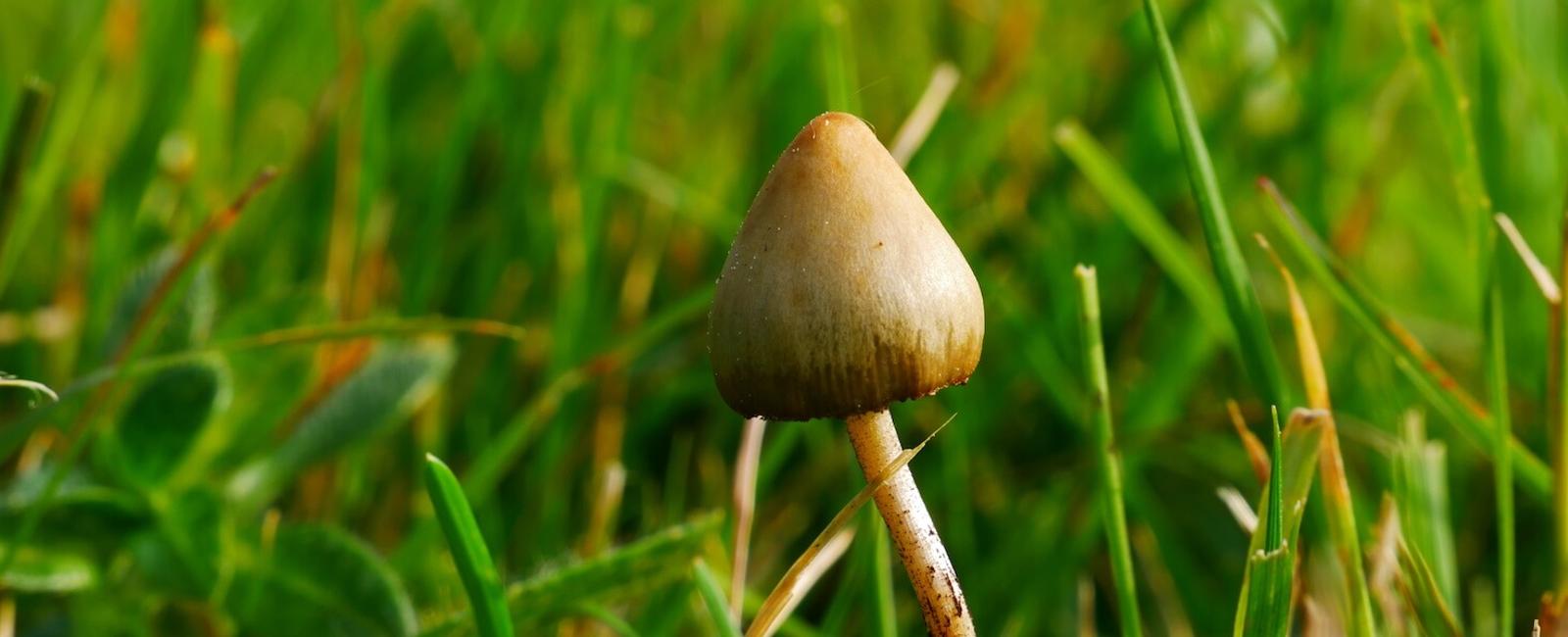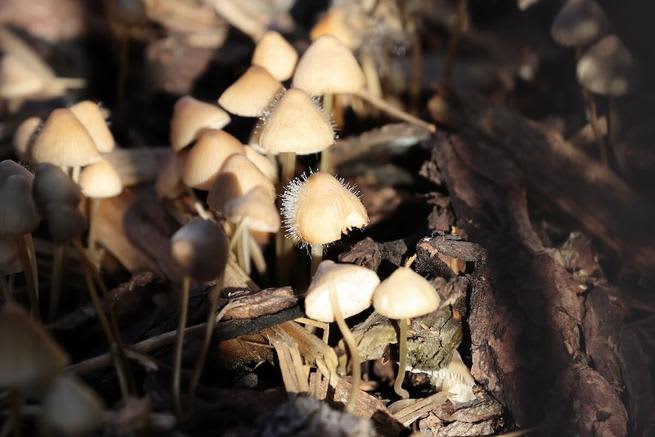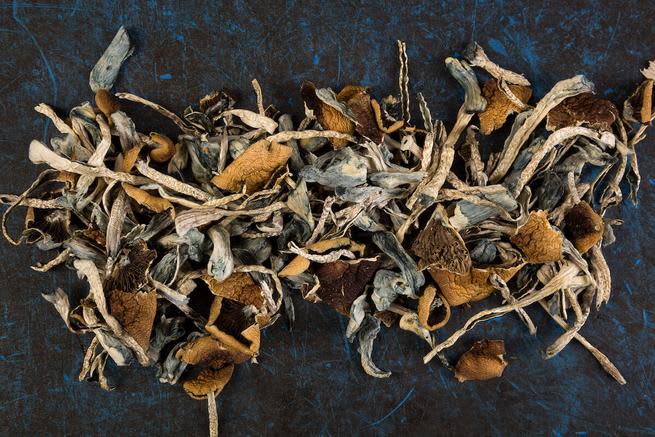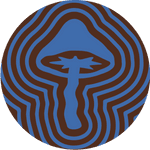

Discovering the world of mushrooms can feel like journeying through a vast, uncharted wilderness. But suppose you take the time to explore this mysterious landscape and learn what it has to offer. In that case, one particularly intriguing mushroom stands out—the liberty cap mushroom. This mushroom is touted for its unique psychoactive properties. It has been used for centuries by various cultures in spiritual ceremonies and therapeutic practices.
This guide will take you through everything you need to know about the liberty cap mushroom, from its history and appearance to its effects and potential risks.
What are liberty cap mushrooms?
First named Agaricus semilanceatus by Swiss mycologist Elias Magnus Fries and known by the common name of liberty cap mushrooms or witch’s hat mushrooms, Psilocybe semilanceata (or P. semilanceata) is a psychedelic mushroom. They’re a member of the genus Psilocybe and are in the Strophariaceae family. They have the highest psilocybin content discovered so far. The cultivated fruit bodies of liberty caps have an average of 1.12% psilocybin, no psilocin, and .21% baeocystin (a naturally occurring psychoactive compound) (1).
Identifying liberty cap mushrooms
Liberty caps vary in color and are hygrophanous, which means they can appear to change color and transparency depending on the level of moisture in their environment. This is one reason why the mushroom’s fruit bodies may change color when moist and appear dull when dried out. Because of this, they can appear chestnut brown and dry to a light tan. The gills of a liberty cap mushroom move from a brownish color to purple-brown; spores can also be a dark purple-brown color.
Most of the time, liberty cap mushrooms are easy to identify with their bell-shaped pileus or conical cap. The genus Conocybe also has a similar cap and contains toxic compounds. Liberty cap mushrooms may also be confused with the Galerina species of mushrooms. These dangerous lookalikes contain harmful compounds that can cause severe kidney and liver damage and may be fatal if ingested.
Another identifier to look out for is an annular zone. Many psilocybes develop this ring-like band that breaks apart as the mushroom cap grows and expands (1).
Where can you find liberty cap mushrooms?
Look for liberty cap mushrooms in pastures or other grassy areas. In North America, you can find these mushrooms west of the Cascade mountain range from Northern California and into the Pacific Northwest, including British Columbia. You can also find these shrooms in grassland habitats throughout Europe, including Ireland, France, Holland, Norway, and Switzerland (1).
Are liberty cap mushrooms legal?

The legality of liberty cap mushrooms is a hot-button issue and one that often causes confusion. And to get a sense of what may be legal (or not) in your area, it’s essential to understand what these fungi are.
Liberty cap mushrooms are psychedelic mushrooms, which means they contain psilocybin and, under federal law, are illegal in most states. However, there are some exceptions to this rule.
For example, in places like Oregon and Colorado, recent legislative changes have made possession of small amounts of psilocybin mushrooms a low-priority offense or legal in some cities. It’s wise to keep in mind that laws regarding these types of substances can vary widely and change frequently, so it’s always a good idea to familiarize yourself with your local laws.
For example, Rhode Island recently moved to decriminalize the possession of small amounts of psilocybin mushrooms, while other states like California and Michigan are currently considering similar. And Missouri and Oklahoma are greenlighting bills promoting further research on psychedelic mushrooms.
Psst: It’s not just the United States that has stringent laws around hallucinogenic mushrooms. In the United Kingdom, psilocybin mushrooms are labeled a class A drug along with LSD. Canada, Australia, Japan, Germany, France, Mexico, and New Zealand all have laws prohibiting psilocybe mushrooms. However, some of those rules and regulations are evolving as some countries are legalizing psilocybin for mental health treatment.
Historical and medicinal uses for liberty cap mushrooms
Magic mushrooms have a long and storied history in various cultures. In fact, psilocybe mushrooms were used as a holy sacrament and called Teonanácatl in the Aztec language. And while it’s likely liberty cap mushrooms were used in sacred ceremonies, our information isn’t always well documented. It is often passed down through traditional folklore or anecdotal accounts.
Beginning in the 19th century, this humble little mushroom was starting to be identified by its common name, the liberty cap. Mordecai Cooke’s 1871 handbook referred to this mushroom as the “cap of liberty,” which can be tied to the cap worn by freed Roman enslaved people. This liberty cap is also called a Phrygian cap. It is named for the ancient region of Phrygia, located in modern-day Turkey (2).
Health benefits of liberty cap mushrooms

While more studies are needed to fully understand how psychedelic mushrooms affect people, the research conducted so far is promising. Here are some of the potential benefits magic mushrooms may offer:
- Psilocybin can have anti-depressant and anti-anxiety effects that last for several months
- Evidence suggests psychedelic mushrooms may help with nicotine and alcohol dependence
- Shrooms can alleviate depression and anxiety in patients who are terminally ill
- Compounds in magic mushrooms may increase the creation of new emotion and informational pathways in the brain
It’s important to note that more studies are needed to fully understand how hallucinogenic mushrooms like liberty cap mushrooms affect mental health before we draw more definitive conclusions (3). And with more funding allocated for psilocybin research, we can expect to see exciting new discoveries soon.
Potential side effects of liberty cap mushrooms
Although magic mushrooms are generally considered safe and non-addictive, some potential side effects are associated with consuming liberty caps and other psychedelic mushrooms.
Common side effects may include nausea, disorientation, confusion, changes in visual perception, or hallucinations. You may also experience increased heart rate, anxiety, or paranoia. It’s also possible to trigger underlying mental health conditions. Keep in mind that everyone reacts differently to these mushrooms, and it’s wise to approach the consumption of liberty cap mushrooms responsibly and with caution, especially if you are new to using them.
Many variables can affect what kind of experience you’ll have, such as your weight, age, the amount you use, how much you’ve eaten that day, and your personality. In general, expect to feel the effects within 30 minutes, which can last anywhere from 3-6 hours (4).
Ethically wildcrafting liberty cap mushrooms

It’s important to remember that when it comes to harvesting wild mushrooms, including liberty cap mushrooms, ethical considerations should always be kept in mind. Especially when you consider the difference between wildcrafting and foraging.
Wildcrafting is a sustainable practice that involves the ethical and responsible gathering of wild plants and fungi for various purposes, such as medicinal or culinary use. This method prioritizes the preservation of natural habitats while taking only what is needed to avoid over-harvesting.
On the other hand, foraging can often lead to harmful practices where individuals take more than required without considering its impact on local ecosystems. It may involve trampling delicate flora in pursuit of specific plant species, leading to soil degradation and damaging nearby wildlife populations. It’s a good idea to approach wildcrafting with an ecological perspective by understanding how our actions affect biodiversity conservation. By embracing this mindful attitude towards nature, we protect valuable resources and learn about their inherent properties while enjoying their benefits sustainably.
We aren’t the only ones who enjoy mushroom hunting; other animals like rodents, deer, birds, and insects all feast on mushrooms, making it even more important to be aware of how we’re gathering wild mushrooms. The fruiting body is only part of the mushroom. If we aren’t diligent in our harvesting, we could damage the mycelium underneath. The mycelial network functions as a sort of “wood wide web” and facilitates communication between mushrooms and other plants.
When wildcrafting mushrooms, consider making a spore print. A spore print is a handy way of capturing the spores from a mushroom, akin to gathering seeds from plants in your garden. Not only do spore prints help in mushroom identification but they can also be used for growing your own mushrooms!
Remember, while similar in nature, there’s a distinction between wildcrafting and foraging practices that reflects how individuals interact with their natural surroundings—one promotes sustainable use while ensuring preservation efforts. In contrast, the other risks causing ecological imbalances by taking more than necessary or damaging local habitats.
Psst: Don’t forget to familiarize yourself with all the poisonous mushrooms that grow in your area. Even though you won’t confuse fly agaric mushrooms (a species in the Amanita genus) with liberty cap mushrooms, it’s wise to be crystal clear on your identification. Suppose you’re at all confused or unsure. In that case, we recommend consulting with a professional to be sure you aren’t confusing the mushrooms you’re collecting with similar species that could be dangerous.
How do you take liberty cap mushrooms?
Like other psilocybin-containing mushrooms, you have a few options to explore if you’re interested in consuming liberty cap mushrooms:
- Making tea: Magic mushroom tea is a popular option for enjoying liberty cap mushrooms, and one of the easiest. If you’re a regular tea drinker, you know that water temperature matters. Similar principles apply here: The hotter the water, the more the psilocybin in your mushrooms will deteriorate. Remember to allow your mushrooms to steep for about 15-20 minutes, as you’ll be less likely to experience any nausea. Feel free to add honey, lemon, or cinnamon for added flavor.
- Microdosing: Microdosing is precisely what it sounds like: taking small doses that are considerably less than those used for a full trip. A microdose is sub-perceptual, which means the subtle changes it creates in your mood or emotions aren’t consciously perceived. Once you’re familiar with microdosing and how it affects you, you can go about your day as you usually would while still experiencing the benefits of psychedelic mushrooms. You could even try the “Stamets Stack.” Developed by mycologist Paul Stamets, this microdosing protocol involves taking Lion’s Mane mushroom and niacin alongside your psychedelic mushrooms. The combination of magic mushrooms and Lion’s Mane can help create new neural pathways in the brain and repair existing neurological damage. Niacin plays a role through helping distribute both the psychedelic and functional mushrooms’ properties further into the brain, helping both work more effectively (5).
- Ingestion: Like functional mushrooms, liberty cap mushrooms can be dried and turned into a mushroom powder. You can use it to create your own custom microdose, or add it to a smoothie, tea, or other beverages and food. Start with a small dosage until you know how it will affect you.
Liberty cap mushrooms: a potent psychedelic mushroom
Liberty cap mushrooms have a rich historical significance for their medicinal properties, which continue to garner scientific interest today. And with an understanding of the proper procedures and safety measures, one can indulge in these fascinating fungi without any legal or health risks. These mushrooms’ positive benefits are plentiful, making them an exciting avenue to explore for those interested in natural remedies and ancient healing practices.
To learn more about other types of mushrooms and get the latest news and discoveries, keep up with us on shroomer.
References
- Stamets, Paul. Psilocybin Mushrooms of the World: An Identification Guide. Ten Speed Press, 1996. https://fungi.com/collections/books-by-paul-stamets/products/psilocybin-mushrooms-of-the-world
- Omissi, Adrastos. “Liberty Cap: The Surprising Tale of How Europe’s Magic Mushroom Got Its Name.” The Conversation, n.d. Accessed April 8, 2023. https://theconversation.com/liberty-cap-the-surprising-tale-of-how-europes-magic-mushroom-got-its-name-130668.
- Alcohol and Drug Foundation. “Magic Mushrooms as Medicine.” March 7, 2023. Accessed April 8, 2023. https://adf.org.au/insights/magic-mushrooms-medicine/.
- Behring, S. “The Effects, Risks, and Potential Health Benefits of ‘Magic Mushrooms.’” Healthline, December 14, 2022. Accessed April 7, 2023. https://www.healthline.com/health/drugs/what-are-shrooms#effects.
- Microdosing Institute. “Paul Stamets Stack: Microdosing Psilocybin and Lion’s Mane.” February 12, 2023. Accessed April 8, 2023. https://microdosinginstitute.com/microdosing-101/substances/lions-mane-stacking/.


